Complete Guide to Rail Ambulance Services in India
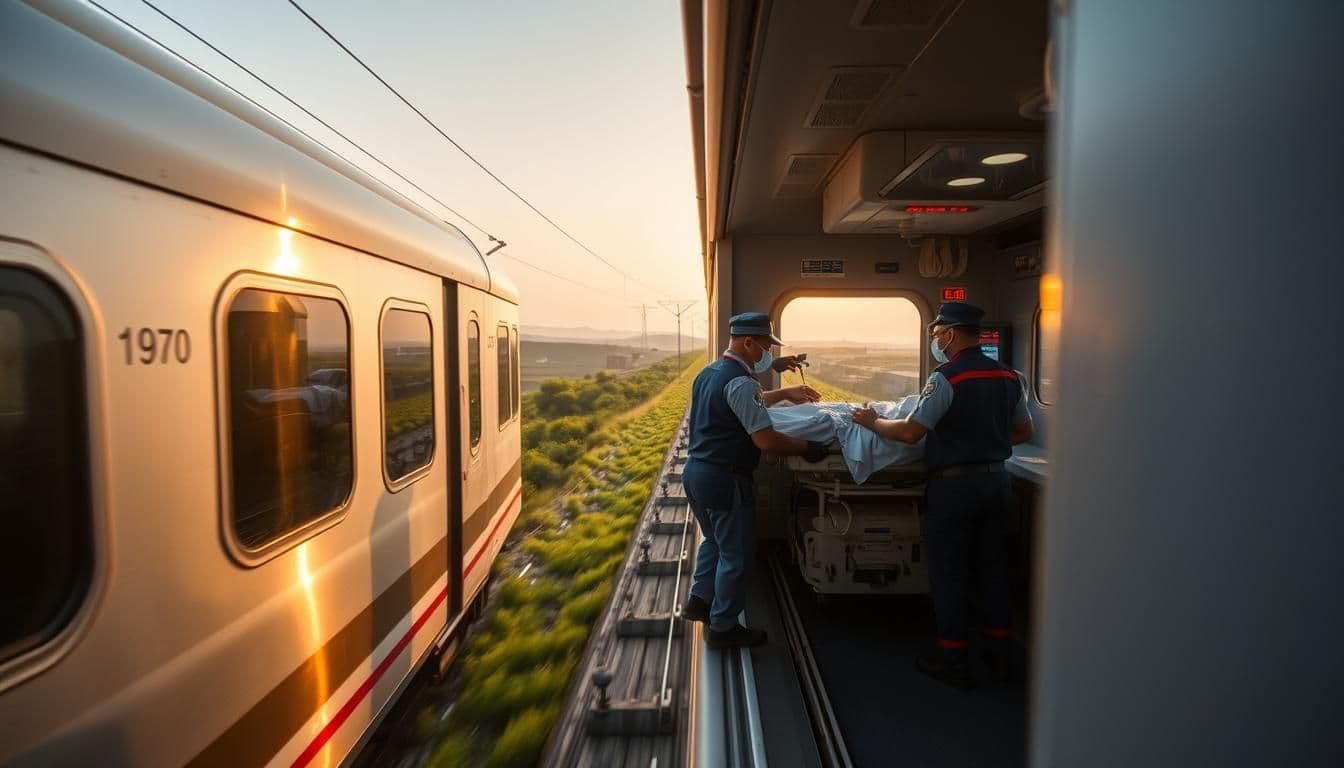
In a country as vast and diverse as India, emergency medical services are crucial for saving lives. One of the most significant challenges is transporting patients over long distances, especially in critical conditions.
Emergency medical transport by train has emerged as a vital solution, providing a lifeline to those in need. With the increasing demand for such services, understanding the role and benefits of rail ambulance services is essential.
This comprehensive guide will explore the concept of rail ambulance services, their importance in India's healthcare system, and how they operate. By providing an overview of the benefits and operational aspects, we aim to educate readers about this vital service.
Key Takeaways
- Rail ambulance services provide critical medical transport across India.
- These services are essential for long-distance patient transport.
- Rail ambulances are equipped to handle emergency medical situations.
- The service is a vital part of India's healthcare infrastructure.
- Understanding rail ambulance services can help in emergency preparedness.
What Makes Rail Ambulance Services Essential in India
With the ability to provide ICU-level care on the move, rail ambulance services are becoming increasingly essential in India. These services have emerged as a critical component of the country's healthcare system, offering a unique blend of medical care and transportation.
Definition and Unique Characteristics
Rail ambulance services in India refer to the use of specially designed train coaches equipped with medical facilities to transport patients over long distances. These services are characterized by their ability to provide continuous medical care, including ICU-level treatment, during transit. The unique features of rail ambulances include advanced life-support systems, trained medical staff, and the capacity to handle critical care patients.
Evolution of Medical Transport by Train in India
The concept of medical transport by train in India has evolved significantly over the years. Initially, basic medical facilities were provided on trains, but with advancements in healthcare technology, these services have become more sophisticated. Today, rail ambulance services are equipped with state-of-the-art medical equipment, enabling the safe transportation of patients across the country.
Role in the Indian Healthcare Ecosystem
Rail ambulance services play a vital role in India's healthcare ecosystem by providing an efficient and cost-effective solution for long-distance medical transport. They bridge the gap between remote areas and advanced medical facilities, ensuring that patients receive timely and appropriate care. The integration of rail ambulance services with the Indian Railways network enhances their accessibility and reach.
Key Features
Benefits
ICU-level care on train
Continuous medical monitoring and support during transport
Advanced life-support systems
Enhanced patient safety and comfort
Trained medical staff
Expert care and handling of critical patients
Key Advantages of Choosing Rail Ambulance Transportation
For patients in need of medical transportation across India, rail ambulances present a compelling option with numerous advantages. The extensive network and specialized services of rail ambulances make them an ideal choice for long-distance patient transfer in India.
Superior Cost-Effectiveness for Long Journeys
Rail ambulances offer a cost-effective medical transport solution, especially for long-distance journeys. Compared to air ambulances, rail ambulances are significantly more economical, making them an attractive option for families and healthcare providers looking to manage costs without compromising on the quality of care.
Enhanced Comfort and Stability for Patient Care
The best train ambulance services in India are equipped with facilities that ensure patient comfort and stability during transport. With dedicated medical staff and appropriate equipment onboard, patients receive the care they need while traveling across the country.
Nationwide Accessibility via Indian Railway Network
One of the key benefits of choosing a rail ambulance is its nationwide accessibility through the Indian Railway network. This extensive connectivity allows patients to be transported to various parts of the country, reaching specialized healthcare facilities that may not be available in their immediate vicinity.
In conclusion, the advantages of opting for rail ambulance services in India are multifaceted, ranging from cost-effectiveness and comfort to wide accessibility. These benefits make rail ambulances an excellent choice for patients requiring long-distance medical transport.
Patient Categories Suitable for Train Ambulance in India
Patients with critical care needs, inter-city travel requirements, and those needing continuous monitoring can benefit from rail ambulance services. The train ambulance in India is equipped to handle a variety of medical conditions, making it a viable option for different patient categories.
Critical Care Patients Requiring Specialized Equipment
Critical care patients who require specialized equipment such as ventilators, cardiac monitors, and infusion pumps can be safely transported via rail ambulances. These trains are staffed with trained medical professionals who can operate the equipment and provide necessary care during transit.
Inter-City Medical Transfer Requirements
For patients needing inter-city medical transfers, rail ambulances offer a comfortable and stable environment. This mode of transport is particularly beneficial for patients who need to travel long distances for medical treatment not available in their current location.
Non-Emergency Patients Needing Continuous Monitoring
Non-emergency patients who still require continuous monitoring during transport can also utilize rail ambulance services. These services ensure that patients receive the necessary medical attention while traveling, reducing the risk of complications.
Patient Category
Medical Needs
Rail Ambulance Benefits
Critical Care Patients
Specialized equipment, continuous monitoring
Equipped with necessary medical equipment, staffed with trained professionals
Inter-City Transfer Patients
Comfortable travel, medical care during transit
Provides a stable and comfortable environment for long-distance travel
Non-Emergency Patients
Continuous monitoring, medical care
Ensures necessary medical attention during travel, reducing complication risks
How Rail Ambulance Services in India Actually Work
Understanding how rail ambulance services work in India is crucial for appreciating the complexity of its healthcare system. Rail ambulance services have become an integral part of India's medical transport network, providing a lifeline for patients who need to be moved across the country.
Step-by-Step Booking and Reservation Process
The booking process for rail ambulance services in India is designed to be efficient and straightforward. Patients or their families can contact the service provider via phone or online platforms. The service provider then coordinates with the Indian Railways to book a suitable compartment on a train, ensuring that the patient's journey is as smooth as possible.
- Initial contact and assessment of patient needs
- Coordination with Indian Railways for train booking
- Arrangement of medical equipment and personnel
Medical Equipment and Facilities Available Onboard
Rail ambulances are equipped with advanced medical equipment, including life support systems, monitoring devices, and medication. The onboard facilities are designed to provide a comfortable and safe environment for patients during their journey.
Medical Personnel Deployment and Expertise
The medical personnel deployed on rail ambulances are highly trained and experienced in handling critical care situations. They are equipped to provide continuous monitoring and medical intervention as needed during the journey.
Coordination with Indian Railways Infrastructure
Rail ambulance services work in close coordination with the Indian Railways infrastructure, ensuring priority booking and smooth transit. This collaboration is crucial for the timely and efficient transport of patients across the country.
By leveraging the extensive Indian Railways network, rail ambulance services can reach remote and rural areas, making healthcare more accessible to a wider population.
Cities and Routes Covered by Rail Ambulance India
With a wide geographical coverage, Rail Ambulance services in India cater to the medical transport requirements of patients across various regions. This extensive network ensures that patients can be transported to the required medical facilities without significant logistical hurdles.
Major Metropolitan Connections
The Rail Ambulance services connect major metropolitan cities, providing efficient medical transport solutions. Key cities covered include:
Delhi, Mumbai, and Kolkata Services
These metropolitan areas are well-connected, with Rail Ambulance services offering specialized care during transport. The services in these cities are equipped with advanced medical facilities.
Chennai, Bangalore, and Hyderabad Coverage
In addition to the major metros, cities like Chennai, Bangalore, and Hyderabad are also part of the Rail Ambulance network, ensuring that patients in these regions have access to quality medical transport.
Tier-2 Cities and Rural Area Accessibility
The Rail Ambulance services extend beyond metropolitan areas to tier-2 cities and rural regions, enhancing healthcare accessibility. This expansion is crucial for providing timely medical care to a broader population.
Popular Inter-State Medical Transport Routes
Several inter-state routes are commonly used for medical transport, including routes between major cities like Delhi-Mumbai, Kolkata-Chennai, and Bangalore-Hyderabad. These routes are critical for transferring patients between states for specialized care.
Route
Frequency
Services
Delhi-Mumbai
Daily
Advanced Life Support, ICU Care
Kolkata-Chennai
Alternate Days
Basic Life Support, Ventilator Support
Bangalore-Hyderabad
Daily
ICU Care, Specialized Equipment
The comprehensive network of Rail Ambulance services in India ensures that patients have access to necessary medical care across the country, regardless of their location.
Understanding the Cost of Rail Ambulance Services
Understanding the financial aspects of rail ambulance services is essential for informed decision-making. The cost of these services can vary widely based on several factors.
Key Factors That Influence Pricing
The pricing for rail ambulance services is influenced by multiple factors, including the distance of the journey, the type of medical equipment required, and the level of medical personnel needed.
- Distance: Longer distances result in higher costs due to increased fuel consumption and longer periods of medical care.
- Medical Equipment: Advanced life-support equipment and specialized medical supplies can significantly impact the overall cost.
- Medical Personnel: The expertise and number of medical personnel required for the transport also affect pricing.
Detailed Cost Breakdown with Real Examples
A detailed breakdown of the costs can help families plan better. Here's an example of how costs can be structured:
Service Component
Cost Range (INR)
Cost Range (USD)
Basic Life Support Equipment
5,000 - 10,000
65 - 130
Advanced Life Support Equipment
15,000 - 30,000
195 - 390
Specialized Medical Personnel
8,000 - 20,000
105 - 260
Total Cost for a 1,000 km Journey
28,000 - 60,000
365 - 780
As shown, the total cost can vary significantly based on the services required.
Insurance Coverage Possibilities and Payment Options
Many insurance providers are now covering rail ambulance services. It's essential to check with your insurance provider for specific coverage details.
"Rail ambulance services are becoming increasingly recognized by insurance companies as a viable and cost-effective option for medical transport." -
Medical Transport Review
Payment options are also available, including installment plans and financial assistance programs for eligible families.
Cost-Saving Strategies for Families
To save on costs, families can consider booking in advance, opting for basic life support when appropriate, and utilizing services that offer package deals.
By understanding these factors and options, families can make more informed decisions about using rail ambulance services.
Comparing Rail Ambulance with Alternative Medical Transport
In the realm of medical emergencies, the mode of transport can significantly impact patient outcomes, necessitating a comparison of available options. Rail ambulance services have emerged as a vital component of India's healthcare infrastructure, but how do they stack up against road and air ambulances?
Rail vs. Road Ambulance: Comprehensive Comparison
When comparing rail and road ambulances, several factors come into play. Rail ambulances offer a smoother ride and more space for medical equipment, making them ideal for long-distance transfers. On the other hand, road ambulances provide greater flexibility and can reach more remote areas. The choice between the two often depends on the patient's condition, the distance to be covered, and the urgency of the situation.
Feature
Rail Ambulance
Road Ambulance
Smoothness of Ride
High
Variable
Space for Equipment
Ample
Limited
Flexibility
Limited
High
Rail vs. Air Ambulance: When Each Makes Sense
Air ambulances are typically reserved for emergencies requiring rapid transportation over long distances or to areas inaccessible by land. While they offer speed, they are generally more expensive than rail ambulances and may not be suitable for patients who are not critically ill but still require medical transport. Rail ambulances, with their balance of cost-effectiveness and comfort, often fill the gap for non-emergency but still critical transfers.
Creating Integrated Transport Plans for Patient Care
Integrated transport plans involve coordinating different modes of medical transport to ensure seamless patient care. By combining the strengths of rail, road, and potentially air ambulances, healthcare providers can tailor transport solutions to individual patient needs, optimizing both the care provided during transport and the overall outcome.
For instance, a patient might be initially transported by road ambulance to a railway station, then transferred to a rail ambulance for the long-distance journey, and finally moved by road ambulance again to their final destination. Such integrated plans require meticulous planning and coordination but can significantly enhance patient care.
Future Developments in Train Ambulance in India
The future of rail ambulance services in India is poised for significant advancements. With a focus on improving patient care and expanding accessibility, several key developments are on the horizon.
Technological Innovations Enhancing Onboard Care
Technological advancements are set to revolutionize onboard care in rail ambulances. Innovations such as telemedicine integration and advanced life support systems will enhance the quality of care provided during transport.
Government Initiatives and Policy Support
The Indian government is expected to introduce policies supporting the growth of rail ambulance services. These initiatives will likely focus on improving infrastructure and streamlining operations.
Expanding Service Networks and Capabilities
Rail ambulance services are anticipated to expand their networks, covering more cities and rural areas. This expansion will increase accessibility for patients across the country.
Development Area
Expected Outcomes
Technological Innovations
Enhanced patient care through telemedicine and advanced life support
Government Initiatives
Improved infrastructure and operational efficiency
Service Expansion
Increased accessibility to rail ambulance services nationwide
As these developments unfold, India's rail ambulance services will become more efficient, accessible, and equipped to handle complex medical transports.
Conclusion: Choosing the Right Medical Transport Solution in India
Rail ambulance services have emerged as a vital component of India's healthcare ecosystem, offering a unique blend of cost-effectiveness, comfort, and nationwide accessibility. When it comes to choosing medical transport, understanding the benefits of rail ambulance services is crucial.
The key advantages of rail ambulances, including superior cost-effectiveness for long journeys, enhanced comfort and stability for patient care, and nationwide accessibility via the Indian Railway network, make them an attractive option for medical transport needs.
By considering rail ambulance services, individuals can ensure that patients receive the necessary care during transport, leveraging the latest medical equipment and personnel expertise. As the healthcare landscape continues to evolve, the role of rail ambulances in providing efficient and reliable medical transport solutions is set to expand.
When choosing a medical transport solution, it's essential to weigh the benefits of different options, including rail, road, and air ambulances. By doing so, individuals can make informed decisions that cater to their specific medical transport needs, ensuring the best possible outcomes for patients.
FAQ
What is a rail ambulance service in India?
A rail ambulance service in India is a specialized medical transport service that utilizes trains equipped with medical facilities to transport patients across the country. These services are designed to provide ICU-level care during transport, ensuring that patients receive the necessary medical attention during their journey.
How do I book a rail ambulance service in India?
Booking a rail ambulance service in India typically involves contacting a service provider, such as Hanuman Care, and providing details about the patient's condition, the required medical equipment, and the destination. The service provider will then coordinate with the Indian Railways to arrange for the transportation.
What kind of medical equipment is available on a rail ambulance?
Rail ambulances in India are equipped with a range of medical equipment, including ventilators, cardiac monitors, and oxygen supply systems, to provide critical care to patients during transport. The specific equipment available may vary depending on the service provider and the type of train ambulance.
Are rail ambulance services in India cost-effective?
Yes, rail ambulance services in India can be cost-effective, especially for long-distance transfers. They offer a more affordable alternative to air ambulances and can provide significant cost savings for patients who require medical transport over long distances.
Can rail ambulance services be used for non-emergency medical transport?
Yes, rail ambulance services in India can be used for non-emergency medical transport, such as transferring patients between hospitals or to a rehabilitation center. These services can provide a comfortable and stable environment for patients who require continuous monitoring during transport.
How do rail ambulance services coordinate with Indian Railways infrastructure?
Rail ambulance services in India work closely with the Indian Railways to coordinate the transportation of patients. This includes arranging for the train to be routed to the required destination, ensuring that the necessary medical equipment is available onboard, and coordinating with railway staff to facilitate a smooth journey.
Are rail ambulance services available across all regions of India?
Rail ambulance services in India are available across a wide range of regions, including major metropolitan cities and tier-2 cities. These services can be accessed through various service providers, such as Hanuman Care, which have a network of rail ambulance services across the country.
Can I get insurance coverage for rail ambulance services?
Yes, some insurance providers in India offer coverage for rail ambulance services. It's essential to check with your insurance provider to determine the extent of coverage and any specific requirements or exclusions that may apply.
How do I choose the best rail ambulance service provider in India?
When choosing a rail ambulance service provider in India, consider factors such as their experience, reputation, medical equipment, and the expertise of their medical personnel. It's also essential to check their network and coverage across the country to ensure that they can meet your specific needs.
Related Articles
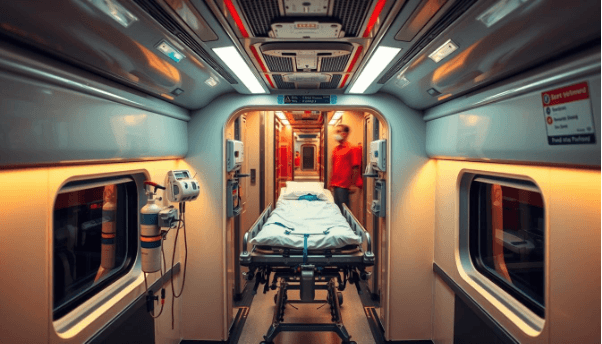
Train Ambulance Cost in India: Complete Breakdown, Factors & Insurance Guide
Explore the average cost of train ambulance services in India, from ₹50,000 to ₹2,50,000. Learn about ICU vs non-ICU rates
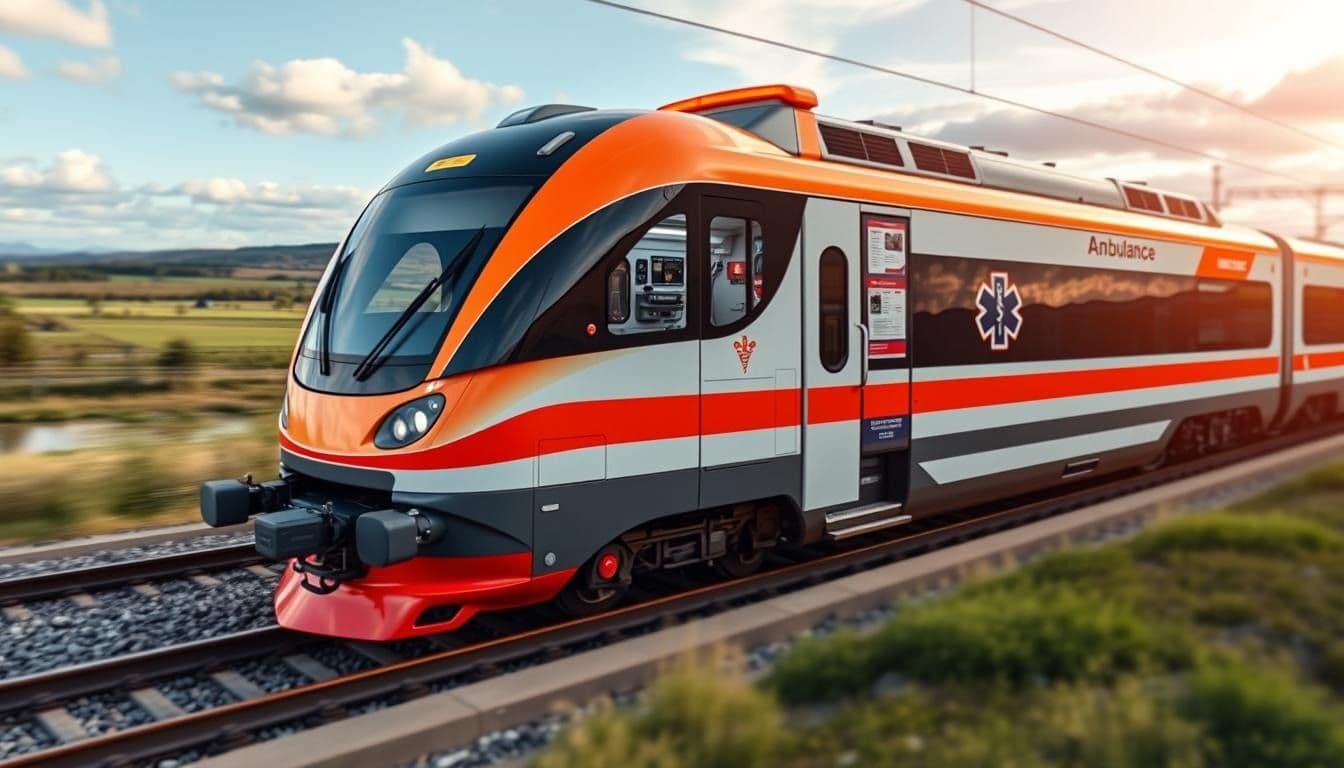
Hanuman Care: Leading Provider of Train Ambulance in India
Reliable train ambulance services from Hanuman Care - India's leading provider of emergency medical transport.
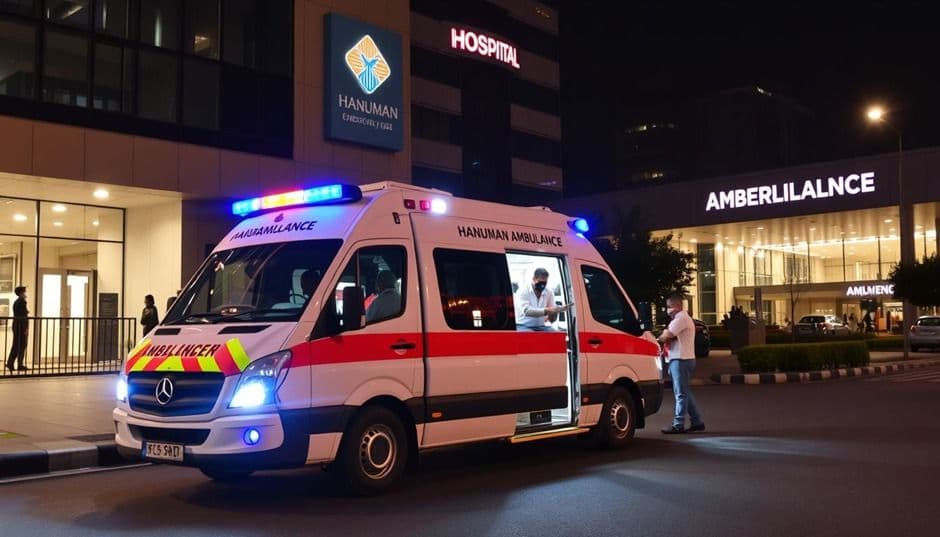
Which is the Best Ambulance Services in Delhi NCR?
Looking for reliable emergency medical transport? Discover the Best Ambulance Services in Delhi NCR, Hanuman Ambulance, offering 24/7 critical care
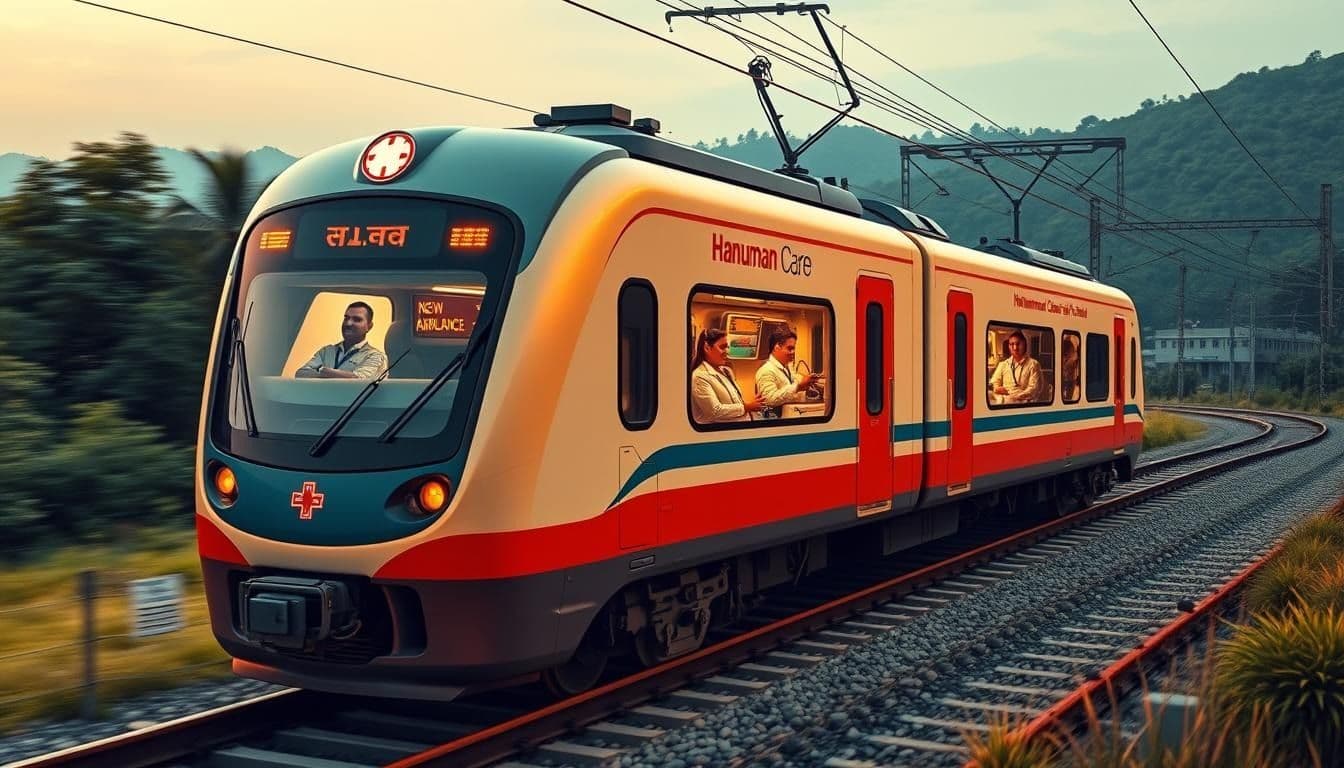
Best Train Ambulance Services in India - Hanuman Care's Livesaving Rail Ambulance
In the vast and diverse country of India, medical emergencies can arise at any moment, necessitating swift and reliable transportation solutions.
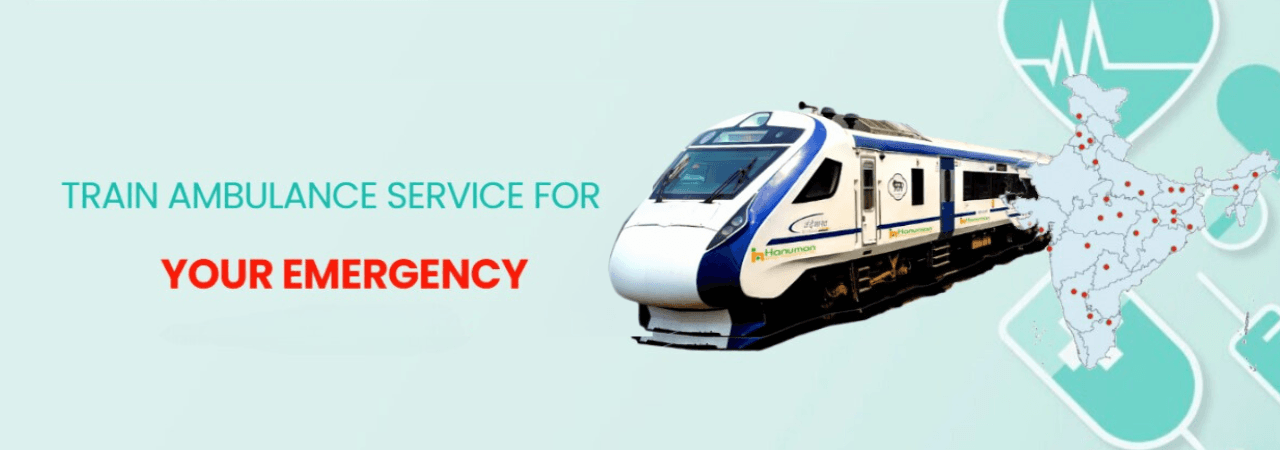
What is a Train Ambulance? Services, Benefits, and When You Need It
Did you know that emergency medical transportation by train is becoming increasingly popular due to its efficiency and cost-effectiveness?
